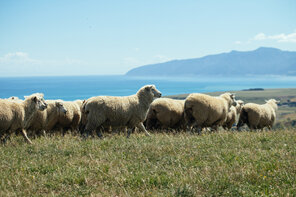
Clostridial diseases almost always result in death and may often involve a significant number of animals in a sheep flock.
The common diseases are:
The next 3 diseases are similar in appearance and all fall into the blood poisoning category which is typified by sudden death followed by going off quickly, bloody discharge from nose, and bloating.
Signs and Symptoms
Tetanus usually appears 10-14 days after the injury (e.g. docking wounds, shearing wounds). Animals are stiff and go into a rigid spasm if stimulated. They look as if they are smiling due to contraction of the facial muscles. Dead animals look normal.
Animals with PK are usually only found dead with no outward signs. Postmortem may help, but no vaccination, lambs doing very well, and very sudden death are classical.
Animals with blood poisoning are usually found dead. “Go off” very quickly. There may be gas under the skin.
The Impact.
All the common clostridial bacteria are almost endemic throughout NZ farms, the diseases are, however, relatively uncommon due to the widespread use of vaccination. Because vaccination is so effective and has been around for a long time many new generation farmers may never have seen the diseases.
Farmers need to be confident that the disease risk will always be present and that a sound vaccination programme will be stopping the disease from happening. Most of the disease outbreaks are now associated with farmers forgetting to vaccinate.
The cost of a clostridial vaccination will depend on the risks on your farm, your farming system, and the level of protection you require. Your local VetEnt vet will be able to work through the options with you and develop a plan to suit your needs.
Management and Control.
Infected animals usually die soon after infection so prevention is the only choice.
Prevention is by vaccination programme.
There is a wide range of vaccines available which are used in a variety of vaccination programmes: